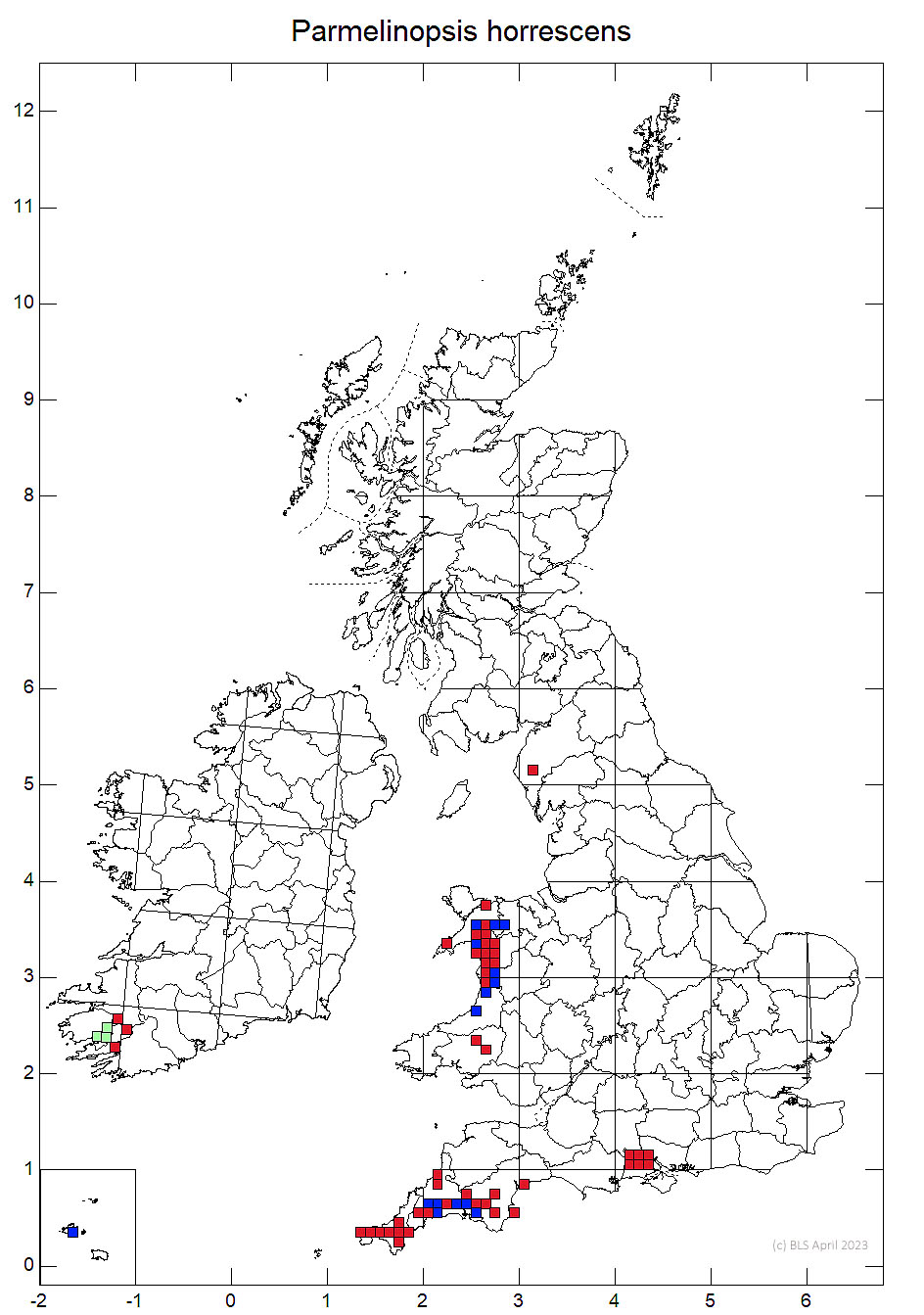Parmelia horrescens
Usually fairly distinctive on acidic bark and lignum and more rarely on siliceous rocks with its shiny narrow grey-white lobes forming neat rosettes, tight against the substrate and usually covered in black-tipped minute rod-like isidia that seem excessively large for the size of the thallus lobes. It looks like a small Parmelia saxatilis with narrow, divided lobes, somewhat truncate at the tips but with, in addition to the oversized isidia an abundance of black cilia growing out from around the bases of and sometimes the tips of the isidia. On account of this well-developed stubble it might not unreasonably called the “Desperate Dan” lichen. It has a C- medulla in contrast to the C+ pink medulla of Parmelinopsis minarum that also lacks cilia.

Photo: R G Woods
Unlike many Section 42 lichens this species is most definitely not a member of the “Lobarion” but enjoys smooth acidic bark of trees such as birch, rowan, alder and young oak. It also grows frequently on lignum and occasionally on siliceous rocks. It is a member of the Parmelietum laevigatae that favours damp ravine woodlands in the highest rainfall areas and can often be abundant on quite young trees.
It has an odd distribution in Britain strongly suggestive of a species that requires an oceanic climate but is absent inexplicably from a number of areas. It is at its greatest abundance in the ravine woodlands of west Merioneth and central Caernarvonshire in the Snowdonia National Park where it occurs in so many sites it is not easy to enumerate them all. It does not appear to have been found north of Llanberis in Wales or indeed in Britain and was until recently not known in Wales south of Machynlleth yet occurring in South Devon, Cornwall and the New Forest. Steve Chambers has partly bridged that gap by the discovery of populations in Cwm Einion, Cardiganshire and in mid Carmarthenshire. It also not so unexpectedly creeps over the border into Montgomeryshire near Aberllefenni. There are no Irish records. Elsewhere it is a strongly oceanic species in Europe with records from West France, North Spain, Portugal and Macronesia. It also occurs on all other continents (except Antarctica) in oceanic and montane-tropical areas.
The spread of dense evergreen woody trees, climbers and shrubs such as ivy, rhododendron and western hemlock in some sites may be reducing its abundance. Acidic atmospheric pollutants may on the other hand create ideal conditions for this species. Given its unusual distribution in Britain it may be sensitive to any change in climate. Wales may hold in excess of half of the British population of a species for which Britain is considered to hold an internationally important population. It is a nationally scarce species and is accorded Near Threatened status in both Britain and Wales.
Rose, F. (1995). Parmelia horrescens. Map 999 in the Parmelia fascicle of the Lichen Atlas of the British Isles (ed. M.R.D. Seaward). British Lichen Society, London.
- Log in to post comments

